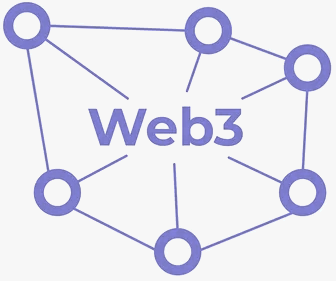Accredited InvestorsAltcoinAnatoli UnitskyAnti-Money Laundering (AML) In CryptoAPIArbitrageArtCoin TokenArticle DirectoryASICAuction Terminology GlossaryBasics of Stock Market InvestingBear MarketBest Crypto Payment Provider In the WorldBitcoinBlockchainBlockchain ConfirmationBlockchain Consensus MechanismBlockchain ForkBlockchain GlossaryBored Ape Yacht ClubBuild a Business That OutperformsBull MarketBuying SkyWay SharesByzantine Fault Tolerance (BFT) ExplainedCasascius CoinCentral Bank Digital Currency (CBDC)Centralized Crypto ExchangeCoinCoinsetCold WalletCollateralCommodity Futures Trading Commission (CFTC)Cross-Chain TechnologyCRUCrypto ExchangeCrypto GlossaryCrypto JokesCrypto Terms to KnowCrypto TickerCryptocurrencyCryptographyCryptojackingCryptounit BlockchainCryptounit GlossaryCryptounit ProgramdApp (Decentralized Application)Dead CoinDecentralized Exchange (DEX)Decentralized Finance (DeFi)Difference Between Bitcoin and EthereumDifferent Ways of Investing MoneyDigital CurrencyDistributed LedgerDo Your Own Research (DYOR)Dollar Cost Averaging (DCA)Dow Jones Industrial Average (DJIA)EncryptionERC-20ERC-721EthereumEvoScentFear Of Missing Out (FOMO)Fear, Uncertainty and Doubt (FUD)Fiat MoneyFNT Fintech CompanyGenesis BlockGlobal Unit PayGlossary of Banking TermsGlossary of Business TermsGlossary of Financial TermsHalvingHODLHot WalletHow Do I Start InvestingHow Rich is Satoshi Nakamoto?How to Create a BlockchainHow to Find Private InvestorsHow to Get Into FintechHow to Program Smart ContractsI Am Thrilled to Be a Part of This Global ProjectInitial Coin Offering (ICO)Initial Public Offering (IPO)Initial Token Offering (ITO)Innovation Basalt TechnologyInnovative Transportation TechnologiesInternational Bank Account Number (IBAN)Investing in Gold Mining StocksInvesting in Gold MiningJagerJoy of Missing Out (JOMO)Know Your Customer (KYC)LedgerLiquidity in CryptocurrencyMaker and Taker Fees in Crypto TradingMarket Capitalization (Market Cap)Meme CoinMetal Credit CardMetaMaskMillenials Now Have Access to Generational WealthMy Best Investment EverNew Digital EvolutionNFT GlossaryOff-Chain TransactionsOn-Chain TransactionsOpen Edition NFTPeer-to-Peer (P2P)Personal Loan GlossaryProbably the Best STO on the MarketProof of Stake (PoS)Real Estate Glossary of TermsReal Estate Investing GlossaryRebase TokenSecurities and Exchange Commission (SEC)Security Token ExchangesSecurity Token Offering (STO)Soulbound Decentralized Identities for Security TokensSoulbound ID Launch by Stobox Proves a SuccessSoulbound TokensStoboxStock Market GlossaryTestimonialsTether Platform and Token (USDT)UnitEx ExchangeUnitsky String TechnologiesUNTBUSDUValidatorWe Started Investing When We Were 25What are Blue Chip NFT?What are Blue Chip Stocks?What are Crypto Assets?What are Crypto Smart Contracts?What are CryptoPunks NFT?What are Digital Assets?What are Digital Collectibles?What are Gas Fees?What are Gas Wars?What are Hashmasks?What are Non Fungible Tokens?What are Non-Sufficient Funds (NSF)?What are Soulbound Tokens (SBT)?What are Stablecoins in Crypto?What are Transactions Per Second (TPS)?What are Utility NFTs?What are Utility Tokens?What Does Burning Crypto Mean?What Does Diamond Hands Mean?What Does Paper Hands Mean?What Does To The Moon Mean?What Does WAGMI Mean?What Happened to Satoshi Nakamoto?What is a 51% Attack?What is a Baby Boomer?What is a Backlink?What is a Banner?What is a Barcode?What is a Bid-Ask Spread in Crypto?What is a Block in Blockchain?What is a Block Reward?What is a Blockchain Address?What is a Blockchain Node?What is a Blockchain Oracle?What is a Blog?What is a Bond?What is a Bot?What is a Broker?What is a Business Accelerator?What is a Cash Cow?What is a Commercial Bank?What is a Commodity?What is a Con?What is a Credit?What is a Credit Limit?What is a Credit Rating?What is a Crypto Airdrop?What is a Crypto Bridge?What is a Crypto Scam?What is a Crypto Token?What is a Crypto Wallet?What is a Crypto Whale?What is a Crypto Winter?What is a Cryptocurrency Public Ledger?What is a Cryptocurrency Roadmap?What is a DAO?What is a Dark Pool?What is a Day Trader?What is a Dead Cat Bounce?What is a Default?What is a Derivative?What is a Digital Credit Card?What is a Fiscal Quarter?What is a Fungible Token?What is a Governance Token?What is a Grace Period?What is a Hard Fork?What is a Hot Wallet?What is a Hybrid Blockchain?What is a Hybrid PoW/PoS?What is a Joint Account?What is a Market Cap?What is a Merkle Tree in Blockchain?What is a Mining Farm?What is a Nonce? What is a PFP NFT?What is a POS System?What is a Prepaid Card?What is a Private Blockchain?What is a Private Key?What is a Public Blockchain?What is a Public Key?What is a Reserve Currency?What is a Ring Signature?What is a Routing Number?What is a Rug Pull in Crypto?What is a Safe Deposit Box?What is a Satoshi?What is a Security Token?What is a Seed Phrase?What is a Shitcoin?What is a Sidechain?What is a Soft Fork?What is a Spot Market?What is a State Bank?What is a SWIFT Code?What is a Tax Identification Number (TIN)?What is a Time Deposit?What is a Transaction Account?What is a Variable Interest Rate?What is a Virtual Assistant (VA)?What is a Virtual Card?What is a Virtual Currency?What is a Visa Card?What is a Whitelist in Crypto?What is a Whitepaper?What is Accounts Payable (AP)?What is AMA in Crypto?What is Amortization?What is an Accrual?What is an ACH Transfer?What is an Actuary?What is an Addendum?What is an Algorithm?What is an Angel Investor?What is an Annuity?What is an Asset?What is an ATM?What is an Atomic Swap?What is an Audit?What is an Avatar?What is an EIN?What is an Embargo?What is an Entrepreneur?What is an IDO (Initial Dex Offering)?What is an Interest Rate?What is an Internet cookie?What is an Investment Bank?What is an NFT Drop?What is an NFT Floor Price?What is an Ommer Block?What is an Orphan Block?What is an Outstanding Check?What is an Overdraft?What is Artificial Intelligence (AI)?What is B2B (Business-to-Business)?What is B2G (Business-to-Government)?What is Bartering?What is Bitcoin Dominance?What is Bitcoin Pizza Day?What is Blockchain Immutability?What is Blockchain Used For?What is BRICS?What is Business-to-Consumer (B2C)?What is C2C (Customer to Customer)?What is Capitalism?What is Catfishing?What is CFD Trading?What is Check Kiting?What is Cloud Mining?What is Communism?What is Content Marketing?What is Decentralization in Blockchain?What is DeFi in Crypto?What is Delisting?What is Depreciation?What is Digital Marketing?What is Diversification?What is Double Spending?What is Dumb Money?What is Dumping?What is Earnings Per Share (EPS)?What is Economics?What is Email Marketing?What is Equity?What is Etherscan?What is Fintech?What is Foreign currency?What is Forex?What is Fundamental Analysis (FA)?What is GameFi?What is Generative Art NFT?What is Gwei?What is Hard Currency?What is Hash Rate?What is Hashing in Blockchain?What is Inflation?What is Initial Game Offering (IGO)?What is Interest?What is Interest Income?What is Mainnet?What is Mastercard?What is Metaverse in Crypto?What is Mining in Cryptocurrency?What is Minting NFT?What is Mobile Banking?What is Money Laundering?What is NFT Alpha?What is NFT Metadata?What is NFT Rarity?What is NGMI Meaning?What is Nominal Interest Rate?What is Online Banking?What is Open-End Credit?What is OpenSea NFT Marketplace?What is Personal Identification Number (PIN)?What is Play-to-Earn?What is Polygon?What is Proof of Authority (PoA)?What is Proof of Work (PoW)?What is Public Key Cryptography?What is Pump and Dump?What is Quantum Computing?What is Refinancing?What is Retail Banking?What is Ripple?What is Sharding?What is Slippage in Crypto?What is Smart Money?What is Solvency?What is Soulbound ID?What is SSL?What is Staking in Cryptocurrency?What is Technical Analysis (TA)?What is Testnet?What is the Ask Price?What is the Better Business Bureau (BBB)?What is the Bid Price?What is the Dark Web?What is the InterPlanetary File System (IPFS)?What is the Gold Standard?What is the Lightning Network?What is the Prime Rate?What is the Sandbox?What is the Secondary Market?What is the World Bank?What is Tier 1 Capital?What is Tokenomics?What is TRC-20?What is Universal Banking?What is Unspent Transaction Output (UTXO)?What is Usury?What is Volatility in Crypto?What is Wash Trading?What is Web3?What is Whisper?What is XRP?What is Zero-Knowledge Proof (ZKP)?Who is Beeple?Who is Satoshi Nakamoto?Who is Vitalik Buterin?Why Tokenization is a Safe HavenWhy You Should Try Your Hand at Trading
What is the InterPlanetary File System (IPFS)?
- Home
- Blockchain Glossary
- What is the InterPlanetary File System (IPFS)?
As two of the most innovative and disruptive technologies of recent years, InterPlanetary File System (IPFS) and blockchain are often compared and contrasted.

While they share some similarities, they also have some important differences that set them apart.
What is the InterPlanetary File System (IPFS)?
IPFS is a peer-to-peer protocol for sharing and storing files. It was developed by Juan Benet, a computer scientist and entrepreneur, and first introduced in 2014. The idea behind IPFS is to create a new web protocol that is not based on location, but rather on content. In other words, instead of relying on URLs that point to specific servers or websites, IPFS uses a unique hash to identify and retrieve files from a distributed network of computers.
The hash-based content addressing system used by IPFS has several advantages over traditional web protocols. For one, it makes it possible to store files more efficiently, as multiple copies of the same file can be stored on different computers without taking up extra space. This also means that files are more resilient to censorship and failure, as they can be accessed even if one or more nodes go offline.
Another benefit of IPFS is that it makes it easier to build decentralized applications (dApps), as developers can use IPFS to store and retrieve data without having to rely on centralized servers. This opens up new possibilities for creating applications that are more secure, private, and censorship-resistant.
IPFS is also designed to be more efficient than traditional web protocols, as it uses a distributed hash table (DHT) to quickly locate and retrieve files from multiple nodes. This means that files can be accessed faster and with less latency than with traditional web protocols.
One of the most exciting applications of IPFS is its potential to revolutionize the way we store and share data. With IPFS, it is possible to create a truly distributed and decentralized web, where files are stored and shared across a global network of computers without any centralized control or authority. This could have profound implications for everything from online publishing and social media to e-commerce and finance.
Despite its many advantages, IPFS is still a relatively new and experimental technology, and there are many challenges that need to be addressed before it can reach its full potential. These include issues around scalability, security, and usability, as well as questions about how IPFS will fit into existing web infrastructure.
Nevertheless, there is growing interest in IPFS among developers, entrepreneurs, and technologists, and many believe that it has the potential to become one of the key building blocks of the next generation of the internet.
InterPlanetary File System and Blockchain
At a high level, both IPFS and blockchain are decentralized technologies that aim to create a more secure and resilient web. IPFS does this by providing a distributed file storage and retrieval system, while blockchain does this by providing a distributed ledger for recording transactions.
One of the main differences between IPFS and blockchain is the type of data they are designed to handle. IPFS is primarily focused on storing and sharing files, while blockchain is focused on recording and verifying transactions. This means that IPFS is better suited for applications that require large file storage and sharing, such as media streaming, while blockchain is better suited for applications that require a high degree of security and trust, such as financial transactions.
Another difference between IPFS and blockchain is their approach to data storage. IPFS uses a content-addressed system, where files are identified by their unique hash rather than by their location on a server. This allows for more efficient and decentralized file storage, as multiple copies of the same file can be stored on different computers without taking up extra space. Blockchain, on the other hand, uses a distributed ledger that records transactions in a tamper-proof and immutable way. This makes it ideal for applications where data security and integrity are critical.
In terms of consensus mechanisms, IPFS does not have a built-in consensus mechanism and relies on other protocols to achieve consensus. Blockchain, on the other hand, uses a variety of consensus mechanisms, such as proof of work and proof of stake, to ensure that the ledger remains secure and trustworthy.
Finally, IPFS and blockchain have different approaches to scalability. IPFS is designed to scale horizontally, meaning that adding more nodes to the network can increase its capacity and performance. Blockchain, on the other hand, has faced challenges with scalability due to the large amount of computational power needed to verify transactions and maintain the ledger.
In conclusion, while both IPFS and blockchain are decentralized technologies that aim to create a more secure and resilient web, they have some important differences that set them apart. IPFS is better suited for applications that require large file storage and sharing, while blockchain is better suited for applications that require a high degree of security and trust. Ultimately, the choice between IPFS and blockchain will depend on the specific needs of the application in question.
It appears evident that both technologies will play a significant role in strengthening the decentralized finance and application sector.
InterPlanetary File System and Web3
Web3, also known as the decentralized web, is a term used to describe the next generation of the internet, where decentralized technologies such as blockchain and IPFS are used to create a new infrastructure that is more secure, private, and resistant to censorship.
IPFS is an essential component of Web3. It provides a way to store and distribute content in a decentralized manner, making it more resilient to censorship and data loss.
As previously mentioned, one of the most promising use cases of IPFS in Web3 is in the creation of decentralized applications (dApps). dApps are applications that are built on top of decentralized protocols, such as Ethereum, and use smart contracts to execute their logic. IPFS can be used to store the frontend of a dApp, making it more resilient to censorship and data loss. In this way, IPFS provides a new way of hosting dApps that is more decentralized and resistant to centralization.
Finally, IPFS is also used in Web3 to provide a more secure and private way of browsing the web. IPFS can be used to create a decentralized version of the internet, where content is stored and distributed in a peer-to-peer manner, making it more difficult for governments and corporations to track users' online activities.
IPFS plays a crucial role in Web3 by providing a way to store and distribute content in a decentralized manner. This makes it more resilient to censorship and data loss, and it enables the creation of new decentralized applications and marketplaces. As Web3 continues to grow and evolve, IPFS is likely to become even more important in the development of the decentralized web.
Related Articles

dApp
Decentralized Applications (dApps) are a new type of software application that is rapidly gaining popularity due to its unique features and benefits. Unlike traditional applications, dApps are...

Blockchain
Blockchain transactions take place on a peer-to-peer network of geographically dispersed computers (nodes). Each node keeps a copy of...

What is Web3?
Another significant advantage of Web3 is its potential to enable new forms of economic activity. The decentralized infrastructure of Web3 allows for the creation and exchange of digital assets, such as cryptocurrencies and non-fungible tokens (NFTs).
- Home
- Blockchain Glossary
- What is the InterPlanetary File System (IPFS)?